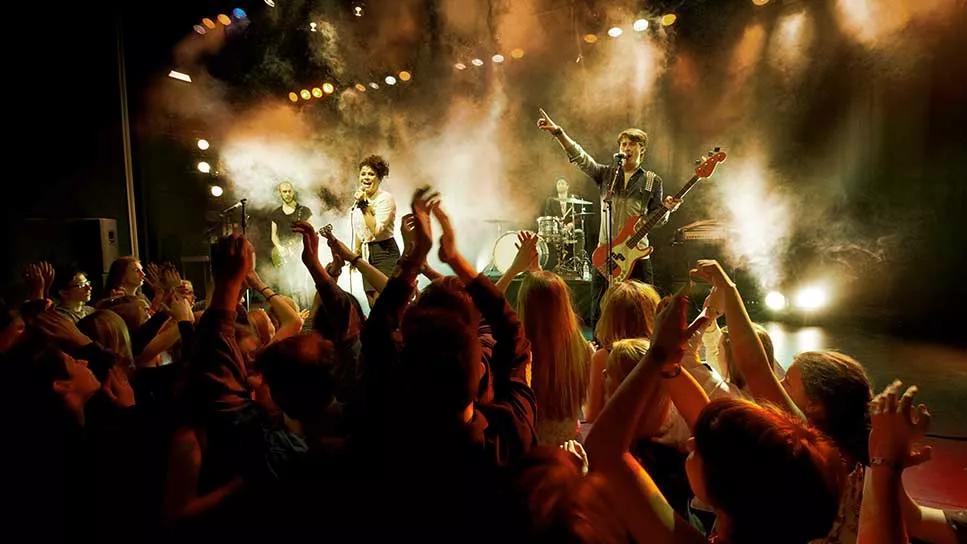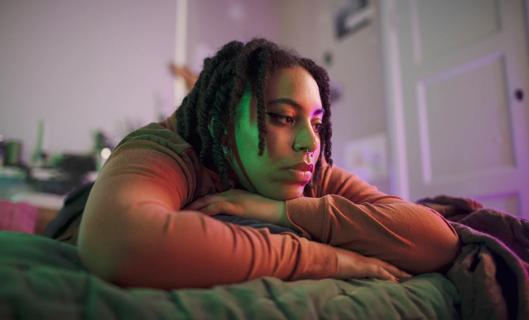Any large social gathering — from a family birthday party to an indoor music concert — has the potential to spread serious infection

When an outbreak occurs, it tends to spread quickly and efficiently. We saw it happen with COVID-19. That’s due in large part to the way viruses grow and shed themselves, spreading among individuals who are in close proximity to one another.
Advertisement
Cleveland Clinic is a non-profit academic medical center. Advertising on our site helps support our mission. We do not endorse non-Cleveland Clinic products or services. Policy
During the COVID-19 pandemic, we learned a lot about the importance of social distancing, staying at home when sick and limiting exposure to other people when we think we may have come into contact with an illness.
But even now, COVID-19 remains dangerous for many, especially our most vulnerable populations. And the concept of superspreader events — gatherings of people where even just a single infection spurs a large outbreak among attendees — is not just a thing of the pandemic past. It’s a harsh reality that still requires caution.
Weddings, funerals and even large family parties (like birthdays or holiday dinners) are just a few examples of regular events that can turn into superspreaders if those in attendance aren’t careful.
The more people there are, the higher the risk becomes for infection — especially if someone in attendance has knowingly experienced symptoms and/or been exposed to a virus before the event.
“Originally, we were worried about superspreader events when not a lot of people were infected at the start of the pandemic,” says infectious disease specialist Donald Dumford, MD.
“During those times, superspreader events were leading to a really big ramp-up in the pandemic. At this point, superspreader events can still lead to a lot of infections, but now, the risk for infection at any public event has become more commonplace.”
Advertisement
Dr. Dumford discusses superspreader events, why they’re still so prime for infection, and what you can do to protect yourself when you inevitably attend one (lest the FOMO set in).
One of the confounding things about superspreader events is that they don’t have exact criteria. It’s entirely possible to have a large gathering of people where very few people (or even none) contract a virus, while a family gathering of just a dozen people could spread a virus to everyone.
“When you see a large event where there’s a greater amount of transmission than would be expected, that qualifies as a superspreader,” clarifies Dr. Dumford.
He points to the new standard where an infected person at a gathering can be expected to infect two to three people (an average of 2.5), with an infection rate of about 20% among family members, from an infectious person.
“When you see an event where that rate is higher, that’s usually what you’d consider a superspreader event,” he continues. As an example, he notes the now well-known study from Washington State that focused on a 61-person choir practice in which a single infected member caused 32 confirmed infections and 20 additional probable cases among the other members.
“Normally,” Dr. Dumford says, “you would expect two or three people, the closest to the infected individual, to get sick from that interaction. Instead, it was at least three times that, possibly five times.”
And we’ve seen superspreader events before with other viruses — like the severe acute respiratory syndrome (SARS) outbreak in Beijing in 2003 or the West Africa Ebola outbreak in 2014–2015. In both situations, there were more resulting infections as the number of close contacts increased.
Further research into the transmission of COVID-19 shows the most severe superspreader-dominant outbreaks are even more severe and faster spread than the most severe non-superspreader-dominated outbreaks.
“Although, on average, COVID-19 cases are less severe than at the beginning of the pandemic, they do still cause considerable morbidity and can still lead to death in our more vulnerable populations, so superspreader events via gatherings can still be detrimental especially if you or a loved one are elderly or immunocompromised,” explains Dr. Dumford.
“If you are in this group, then wearing a mask at public events is a good way to reduce the risk.”
It all comes down to how the virus spreads. “COVID-19 is predominantly transmitted by close contact droplets,” Dr. Dumford reminds us. “It’s going to be spread by that person you’re sitting with at a table who you’re talking with for an extended period of time.”
Advertisement
Take that choir practice mentioned. Over the course of two-and-a-half hours, the infected, asymptomatic person was continually projecting virus-laden droplets into the air. And given the close quarters and indoor nature of the practice, there was plenty of opportunity for those droplets to circulate and infect dozens of others in the room, not just those in the immediate vicinity. When we speak, cough or sing, we can propel virus-infected droplets around six feet (even more if you sneeze).
But Dr. Dumford points out that superspreader events may occur when much smaller virus-laden droplets are able to float in the air longer, spreading over a longer distance and becoming easier to inhale. This is why crowded, indoor gatherings are probably the most likely to become superspreader events.
Superspreader events are dependent on several factors, including the environment where the event takes place, how contagious people are and the kind of variant they’ve been exposed to.
Superspreaders that come from family events often catch those infected off-guard because they believe their family to be something of a safe “bubble.” A close group of people they’re around often and people who’ve disclosed their COVID-19 vaccination status seem unlikely to cause an outbreak on the surface. But as Dr. Dumford notes, many don’t quite fully comprehend the fullest, strictest “bubble” concept.
Advertisement
“There are definitely big family gatherings, like a birthday party or a wedding, that can be a good example of a superspreader,” he illustrates. “They may be your family, but often, you don’t all live under the same roof. There’s still a risk because you don’t know if any one of the attendees hasn’t recently exposed themselves to other people who’ve had COVID-19, whether they’ve been hanging out with friends or traveling abroad.”
With that in mind, social gatherings and public outings have higher potential to become superspreader events if they:
Superspreader events can occur at home or in public places, including:
“The worst-case scenarios are events where a large number of people are clustered together, talking or singing or some other sort of increased activity, especially in a poorly ventilated setting,” emphasizes Dr. Dumford.
Advertisement
“Outdoor gatherings are safer than indoor gatherings. And indoor gatherings with the windows open and an airflow going through are better than not. But you can still get infected even at those events if the right variables are in play.”
No matter the setting, there’s still an inherent risk. The best solution to any potential infection is to make sure you’re up-to-date on your COVID-19 vaccines.
“The recent COVID-19 booster vaccines have been tailored to the virus strains that were circulating most this past fall,” explains Dr. Dumford. “The clear benefit to the vaccine is those who have been vaccinated are less likely to get severe illness from the virus and have a reduced likelihood of transmitting the virus to others. Additionally, recent data also shows that those that are vaccinated are less likely to develop long COVID”.
Masks and social distancing will also cut your risk for infections way down, especially in outdoor settings, but there’s always a risk in crowds.
“We do our best to stay safe, but the more people you’re close to, you’re in contact with, the higher the risk goes even if you’re doing everything possible,” says Dr. Dumford.
Of course, if you’re hosting the event, as an extra precaution you can always ask your guests to test for COVID-19 or inquire about their vaccination status before they attend. Even as a guest, you’re well within your right to inquire about where other attendees stand on the matter. It’s now become so commonplace to have these conversations before getting together for any big celebration, it’s almost expected in many social circles.
Let’s say, despite every potential risk, you decide to attend an event. Or maybe you go to a gathering expecting it to be small but it turns out to be quite big. What should you do afterward, especially if you find out someone else at the gathering tested positive for COVID-19?
According to the U.S. Centers for Disease Control and Prevention (CDC), if you think you’ve been exposed to the virus and you’ve been vaccinated for COVID-19, you should wear a mask when you’re around other people and test on day five.
If you think you’ve been exposed to the virus and you’re unvaccinated or aren’t yet caught up on the most recent vaccine for COVID-19, you should stay home for five days and test on day five.
Regardless of your vaccination status, stay home when you’re sick and/or have a fever until you no longer have symptoms and/or your fever subsides.
“I would be sure to wear a mask even when you’re inside your own home and around family members that you wouldn’t normally mask-up for, just to reduce the likelihood of transmission,” advises Dr. Dumford. “You need to avoid exposing others, especially those who might have compromised immune systems.”
Soothe your aches and pains, stay hydrated and contact a healthcare provider if you experience shortness of breath or chest pain, have trouble eating, have a consistent fever or are concerned about any of the symptoms you experience. There are a number of COVID-19 treatment options available that can help when COVID-19 hits home, despite your best efforts.
Learn more about our editorial process.
Advertisement

Covering your mouth when you cough and staying home when you’re sick are a couple ways to help keep yourself and others COVID-free

This vital nutrient supports your health, but its role in COVID-19 prevention and treatment isn’t proven

Studies have shown promising results, but additional research is needed

Infection and inflammation can cause you to lose your voice and have other voice changes until you’re fully healed

A COVID-19 infection can bring on depression or anxiety months after physical symptoms go away

Just like the flu, COVID-19 continues to evolve every year with new and smarter variants

The latest omicron subvariants carry specific mutations that may allow the SARS-CoV-2 virus to be better at evading immune protection

You can work out with mild COVID-19, but not in a gym, and listen to your body and don’t overdo it

If you’re feeling short of breath, sleep can be tough — propping yourself up or sleeping on your side may help

If you fear the unknown or find yourself needing reassurance often, you may identify with this attachment style

If you’re looking to boost your gut health, it’s better to get fiber from whole foods